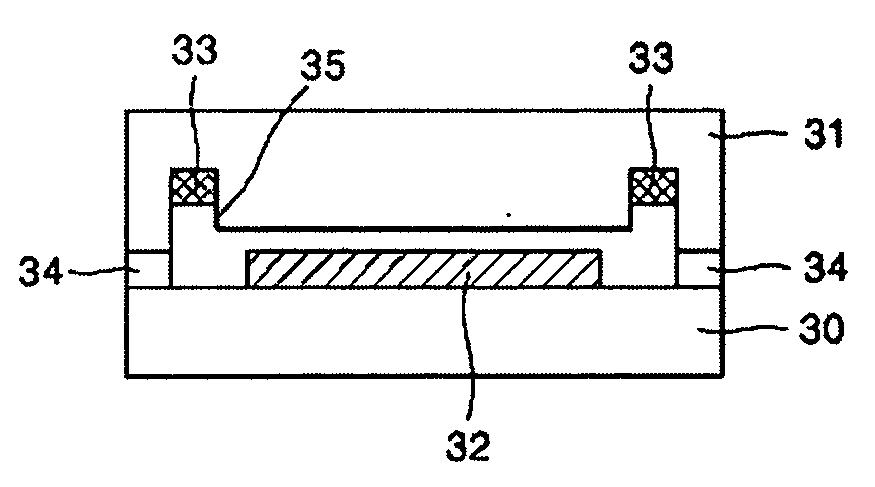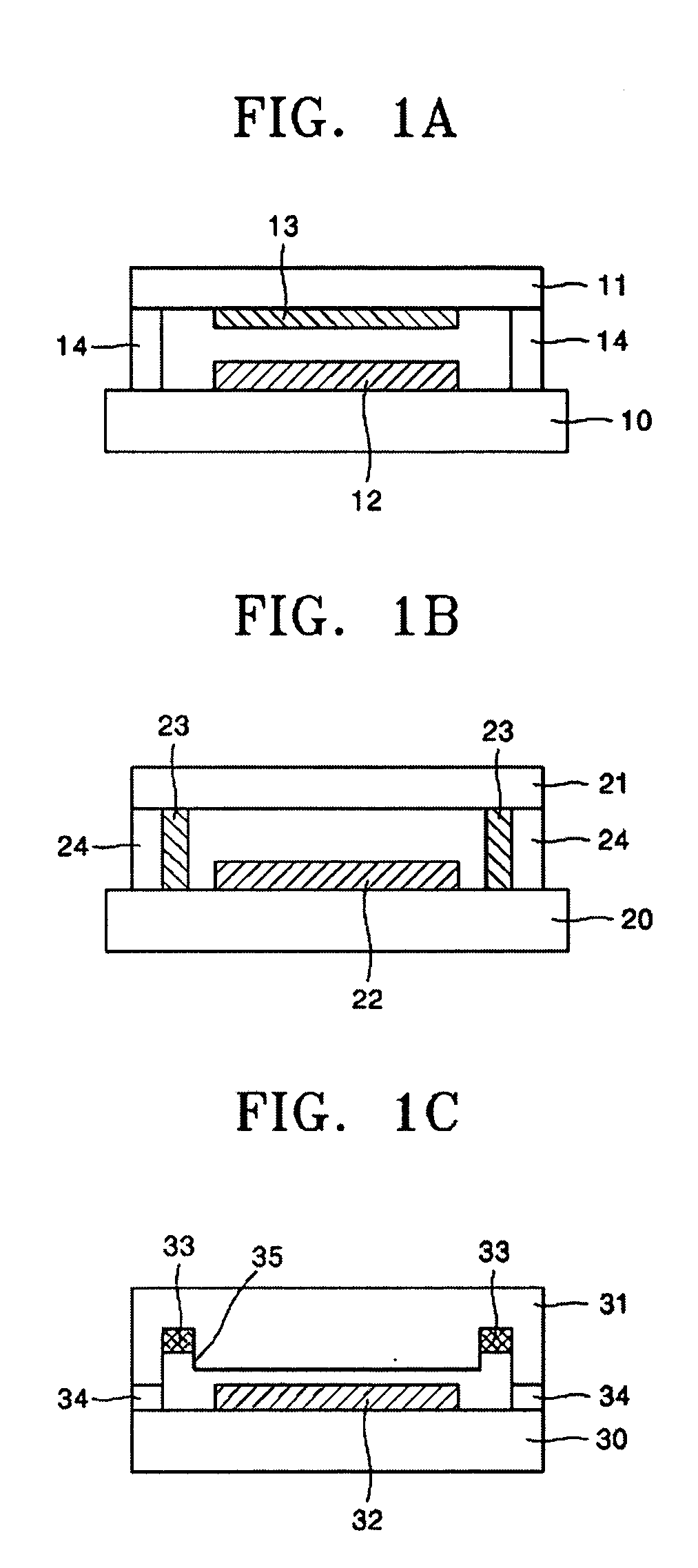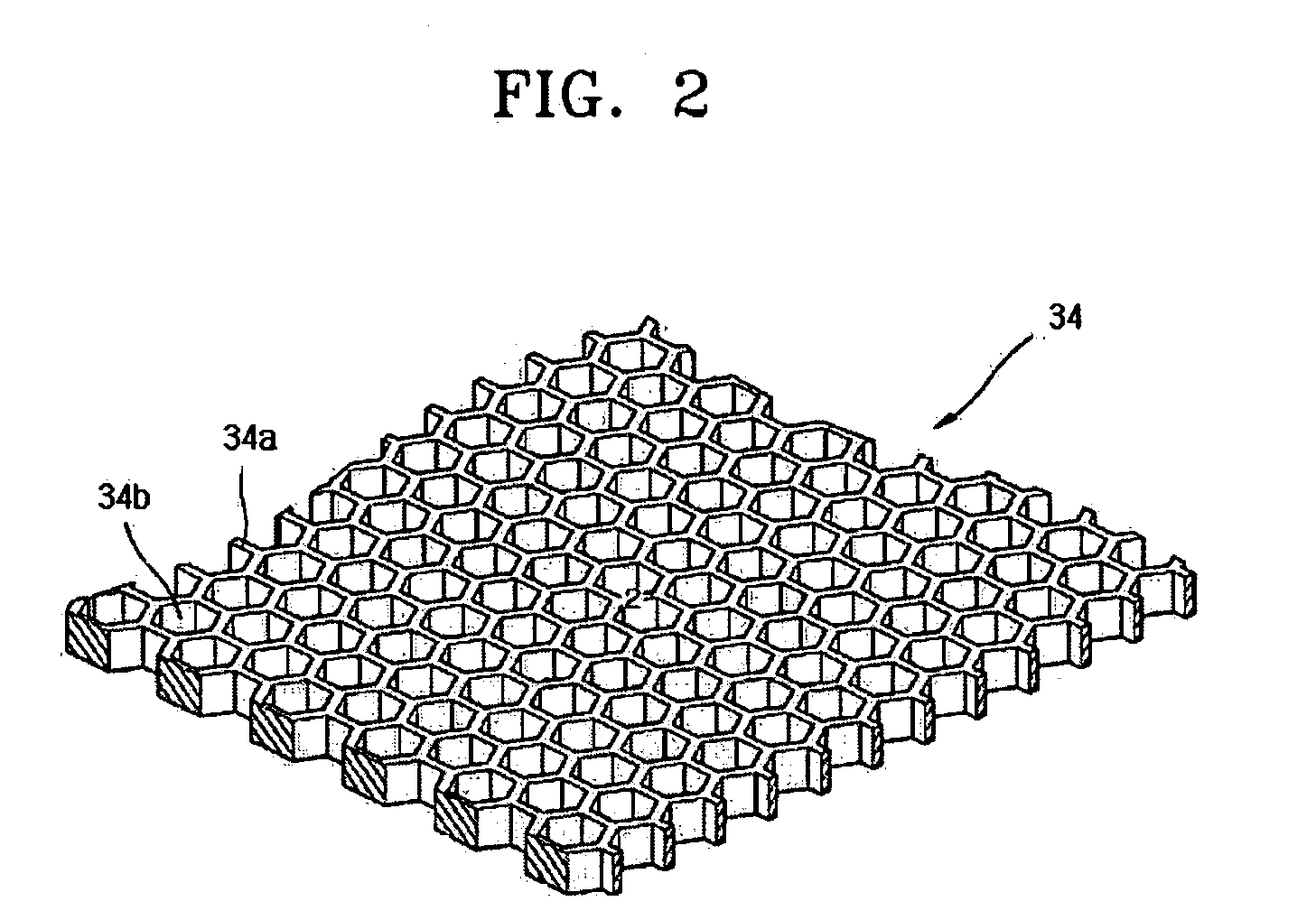Organic electroluminescent device and method of manufacturing the same
a technology of electroluminescent devices and organic el devices, which is applied in the manufacture of electrode systems, electric discharge tubes/lamps, and discharge tubes luminescent screens, etc., can solve the problems of easy deterioration of organic el devices, high material and process costs, and complicated process of powder-type dessicant manufacturing, etc., and achieve the effect of improving the adsorption of moisture and oxygen
- Summary
- Abstract
- Description
- Claims
- Application Information
AI Technical Summary
Problems solved by technology
Method used
Image
Examples
example 1
[0063] Ammonia water (NH4OH) was added to 30 g of H2O to adjust the pH of a resultant solution to 10. 10 g of TEOS was then added thereto and stirred at an elevated temperature for 3 hours or more. Nitric acid was added to a resultant mixture to adjust the pH of the resultant mixture to about 0.5 to 1.0.
[0064] 1 g of a water-soluble acrylic resin solution (30 wt %) was added to the mixture and stirred to obtain a uniform solution.
[0065] The uniform solution was coated on a soda glass substrate that was rotating at 180 rpm for 120 seconds. Next it was dried in a drying oven for about 2 minutes to remove residual solvent. The resultant product was calcined at 500° C. for 30 minutes to form a porous silica layer.
[0066] After cleaning the soda glass substrate with the porous silica layer, a sealant was coated onto at least a side of the glass substrate with the porous silica layer and at least a side of a glass substrate with a first electrode, an organic film, and a second electrode...
example 2
[0067] In this example, 10 g of TEOS was added to a mixture of 30 g of H2O and 10 g of EtOH and was stirred for more than 30 minutes to carry out hydrolysis. Then 5 g of CaCl2 was added to a resultant mixture and dissolved to prepare a composition for porous silica formation.
[0068] The composition was coated on a soda glass substrate that was rotated at 180 rpm for 120 seconds. It was then dried in a drying oven for about 2 minutes to remove residual solvent. The resultant was calcined at 500° C. to form a porous oxide layer.
[0069] The glass substrate with the porous oxide layer was cleaned. Then a sealant was coated on at least a side of the glass substrate with the porous oxide layer and at least a side of a glass substrate with a first electrode, an organic film, and a second electrode. Then both the glass substrates were joined to complete an organic EL device.
example 3
[0070] An organic EL device was completed in the same manner as in Example 2 except that 5 g of LiBr instead of CaCl2 was added to the composition for porous silica formation.
PUM
 Login to View More
Login to View More Abstract
Description
Claims
Application Information
 Login to View More
Login to View More - R&D
- Intellectual Property
- Life Sciences
- Materials
- Tech Scout
- Unparalleled Data Quality
- Higher Quality Content
- 60% Fewer Hallucinations
Browse by: Latest US Patents, China's latest patents, Technical Efficacy Thesaurus, Application Domain, Technology Topic, Popular Technical Reports.
© 2025 PatSnap. All rights reserved.Legal|Privacy policy|Modern Slavery Act Transparency Statement|Sitemap|About US| Contact US: help@patsnap.com



